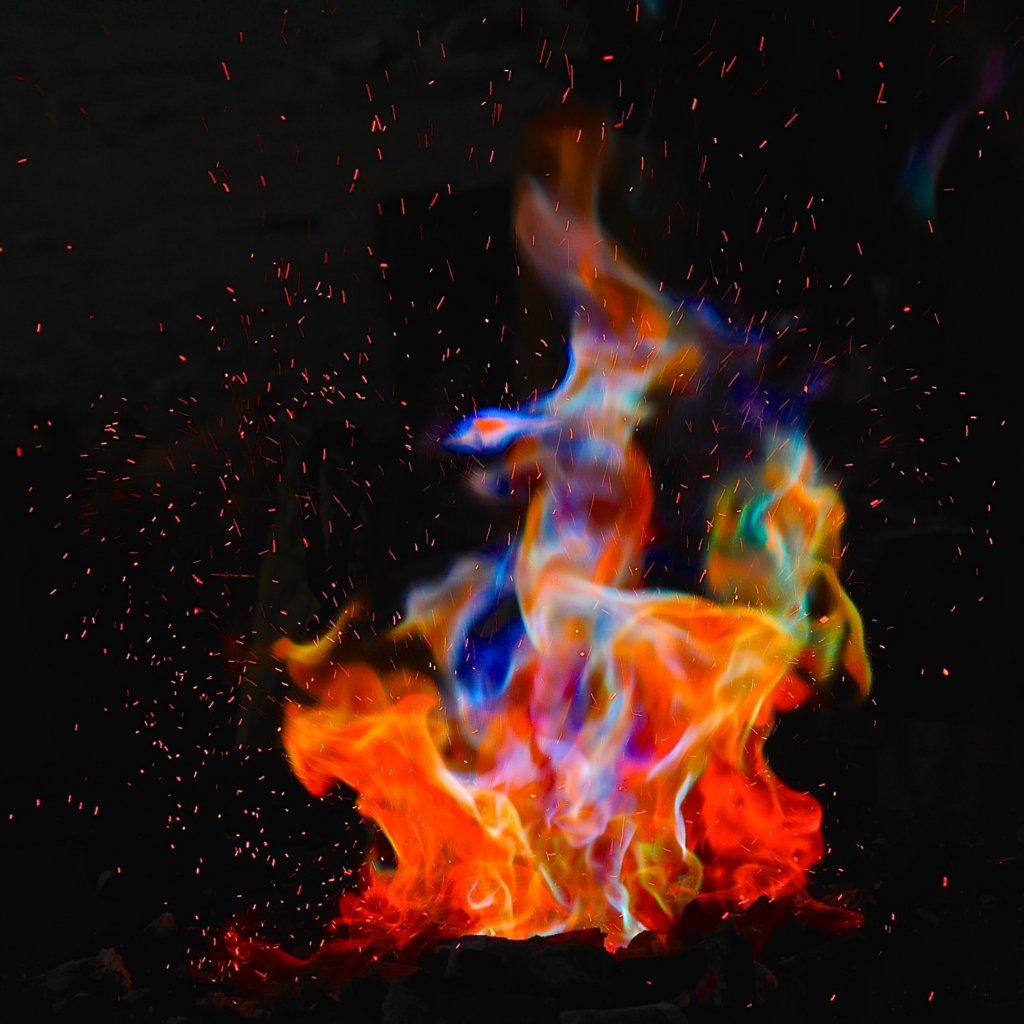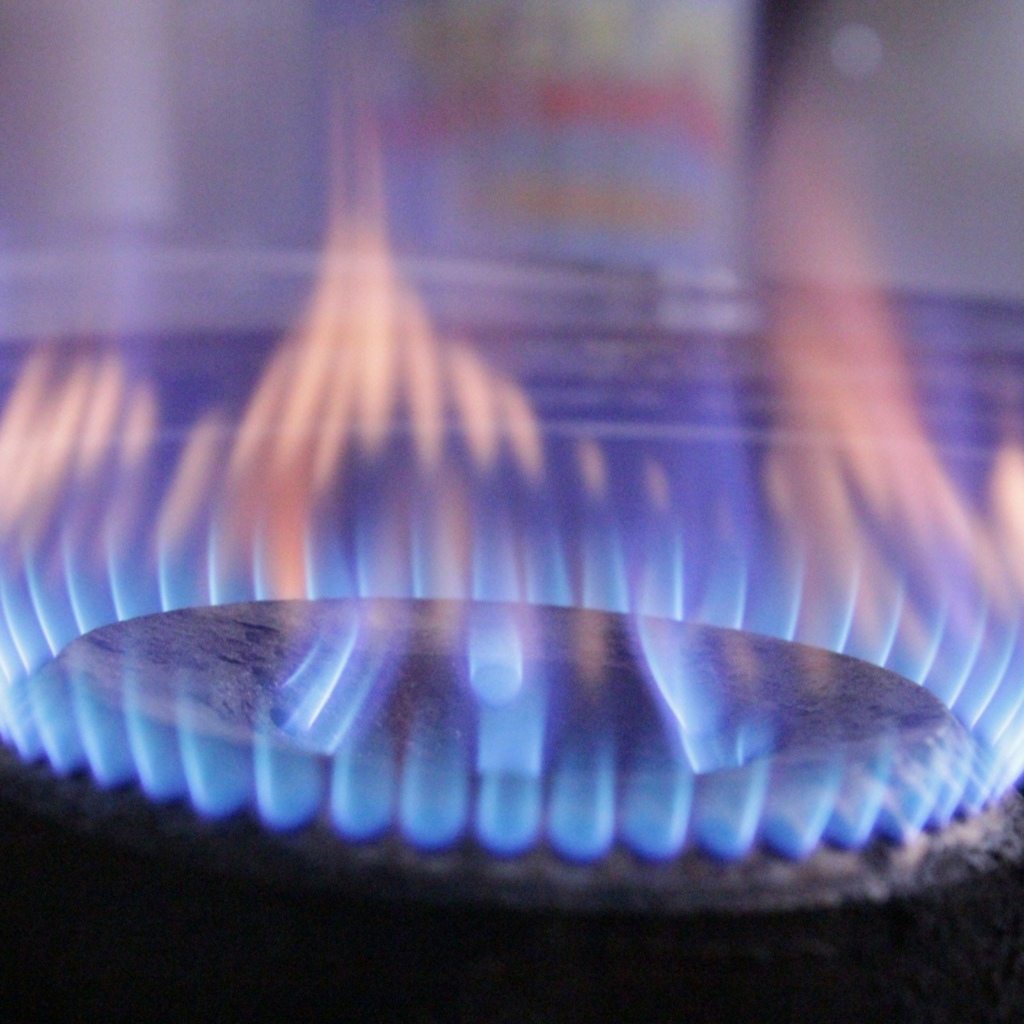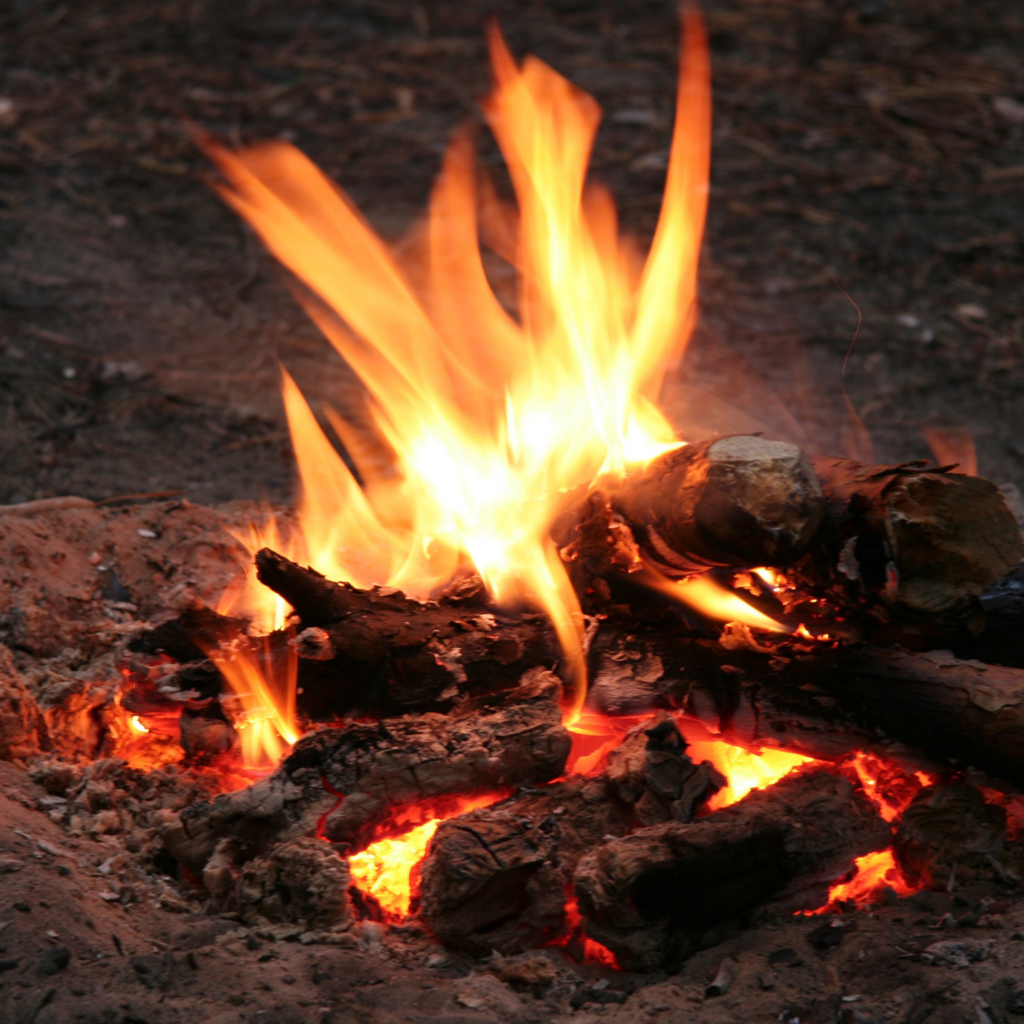A flame has different colors in the visible spectrum. But what is the hottest fire color? And is there a direct relationship between flame color and temperature? Let’s find out.
When we think of fire, our minds typically conjure images of a flame burning red and orange.
But fire, being such a mesmerizing element, does have a lot of colors. The flames can glow amber yellow red and orange, but depending on the temperature and source of fuel, the flames can glow different colors, some are even invisible to the naked eye.
Did you wonder why the fire in the gas stove emits blue flames, while a candle flame is often yellow and orange? Which of these is the hottest color of them all? And which is the coolest?
How is Fire Produced?

Before we dive into the hottest fire color, let us first understand some of the basic concepts related to fire, as they also explain why fire gives off varying hues.
Fires are the result of a chemical reaction between a fuel and oxygen called combustion.
Look at it this way: when you apply heat to a bunch of twigs in an area where there’s oxygen, you produce fire.
That’s because there’s energy inside those twigs, and due to the reaction with the heat source plus the presence of oxygen, the trapped energy is activated. The reaction between these three elements produces gas.
But it doesn’t end there. As long as there is oxygen and a fuel source, the chemical reaction will keep on going to the point that it produces a lot of heat and the material starts to ignite. After some time, a flame is produced and energy is released in the form of heat and light.
When you take one of these elements: fuel source, heat, and oxygen, the fire dies down.
Why Does a Flame Have Different Colors?

One of the most curious characteristics of fire is that it has a wide range of different colors.
But why is this so?
There are two possible reasons for the varying colors of fire flames: the fuel’s chemical composition and temperature.
When you observe a candle flame closely, you’ll find that the colors vary depending on their distance from the fuel source. The flame near the base is white fire, and as you go farther from the source, you’ll see red orange flames.
In the color temperature of a candle, the white hot flame indicates that it has a higher temperature than the outside flames that glow red and orange. The temperature of white fire can go up to 1500 C or 2730 degrees Fahrenheit.
Now, let’s go back to our example earlier: the blue flames from your stove. Gas stoves use natural gas and other types of flammable gas as fuel. Since these gases burn hotter and emit hydrocarbon compounds, they tend to produce blue flames.
And you should know, blue flames burn even hotter than white flames.
What are the Colors of Flame?
It is very interesting to know there are different colors of fire. We’ve so far mentioned orange and red flames, as well as white and blue flames. But did you know there’s a wide range of other colors of fire in between?
So, here are the different colors of flame:
- white
- blue
- purple
- green
- yellow
- orange
- red
- pink
Now let’s get to know these colors one by one.
Related Posts:
- Is Shaving Cream Flammable?
- Symbolism of Fire in Literature and Religion
- At What Temperature Does Paper Burn?
- Is Helium Flammable?
- Understanding the Different Classes of Fire and How to Extinguish Them
White Flame
White flame is a very hot color of fire, with a temperature burning at 2730 degrees Fahrenheit. Some people say white hot because they see bright white color. This means that this flame is extremely hot and is capable of burning some solids such as nickel and uranium.
Blue Flame

While blue represents cooler colors, it is quite the opposite in fires meaning. The color of the blue flame indicates that it is even hotter than white.
Typically, blue flames can go up from 2,600 degrees Fahrenheit to 3,000 degrees Fahrenheit. That is because the blue flame is typically fueled by natural gas, and natural gases tend to burn hotter than organic materials such as wood.
So when you switch on your stove, you’ll notice the blue flame almost instantly because natural gas burns rapidly and at extreme temperatures. The presence of blue flames is also indicative of the complete burning of carbon.
When all flame colors combine, the hottest flame color is white blue.
Purple Flame
In the visible spectrum, the purple flame is the hottest color. This flame can get so fiery hot with temperatures going over 1,650 degrees celsius. This temperature is super hot that it is often used in the industrial setting, particularly when working with cast iron and porcelain.
Green Flame
While the other flame colors are produced through traditional fuel sources, the green flame is different from other flame colors in that it is has a certain chemical composition responsible for making green fire. You can produce a bright green flame by adding copper chloride. You can also use other compounds such as barium, borax, boric acid, and boron to produce different green-hued flames.
Orange Flame

The orange flame is one of the most obvious flame colors in the visible spectrum. In the color wheel, orange is the complementary color for blue. Ironically, orange is one of the hottest colors, but when it comes to temperature, it is second to red as the coolest flames. Orange flames burn up to 1100 degrees celsius.
The orange flame seems to be the most popular among the flame colors. That’s because when you burn organic materials such paper and wood, carbon is released, lending the fire an orange and yellow flames.
Also, if you notice the orange yellow flame when burning firewood, it is because there are sodium and iron in them.
Red Flame
When you start a fire, the first flame color is red. Among the fire flames, red has the lowest temperature. When you observe a candle flame, you’ll see that it first burns red, then orange, and then yellow. A red flame burns around 800 degrees celsius. You can also create red flames by using strontium chloride.
Pink Flame
You don’t see a pink flame when you burn with natural fuels, but you can create pink fire using metal salts like lithium chloride. Lithium chloride gives the flame a red tinge, but because it is often less intense than red, pink flames are produced instead. You can also produce pink flames using strontium chloride.
The Relationship Between Color and Temperature of Fire
As you can see, the color of the flame tells us about the temperature of the fire. Many of us commonly think of fire as having red, yellow, and orange flames. That’s because we often burn natural fuels like wood, which produce such color flames.
It’s also ironic to think that the hottest colors we knew growing up (yellow, red, and orange) are in fact have the lowest flame temperatures. Instead, the cool colors in the color wheel, which are blue and violet, have the highest temperatures when it comes to fire flames.
Producing Colored Flames With Chemicals
Flames are natural by-products of the process of combustion. Flames get hotter because gases are released into the air. And for as long as the elements of the fire triangle are present: heat, oxygen, and fuel, a fire can become self-sustaining.
But did you know that you indeed put colors to the flames as you wish? Yes, you can use various chemicals to produce colored flames.
- red flame – lithium and strontium chloride
- green flame – borax, alum, copper chloride
- purple flame – potassium chloride
- blue flame – copper chloride
- yellow flame – sodium chloride
- orange flame – calcium chloride
- silver sparks – magnesium shavings and powdered aluminum
- gold sparks – iron filings
The same concept applies to fireworks. Manufacturers incorporate the right chemicals into fireworks to achieve those dazzling colors when they explode in the sky.
Frequently Asked Questions
What is the hottest fire color?
Purple flames are the hottest flames and they can burn up to over 1,650 degrees celsius.
Is blue or purple fire hotter?
In the visible spectrum, we can say that purple flames are the hottest color, and blue comes second.
What is the least hot fire color?
A flame usually starts off red, then transitions to orange and then yellow. Red is the farthest from the inner core of their fire, so it’s also the coolest in the flame region.
Conclusion
Understanding the various flame colors help us learn more about fire and its temperature. The coolest flame is red and the hottest is purple. The color of the flame also indicates the fuel being used and the presence of chemical compounds.

Leave a Reply